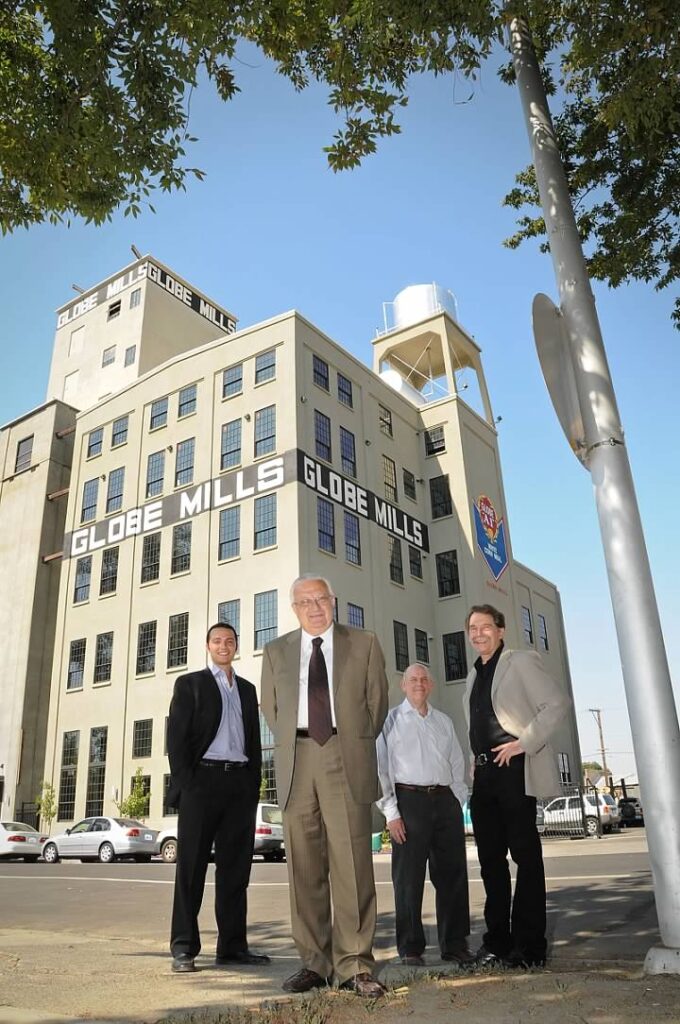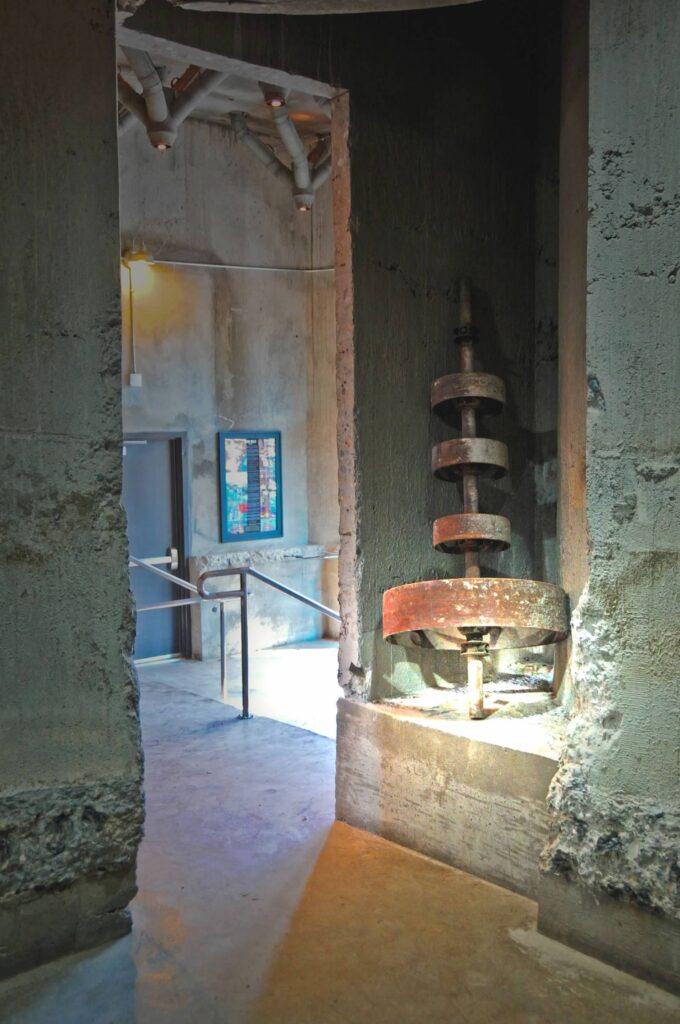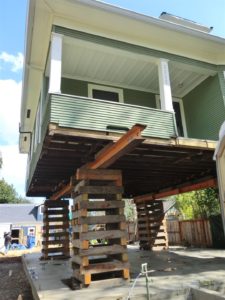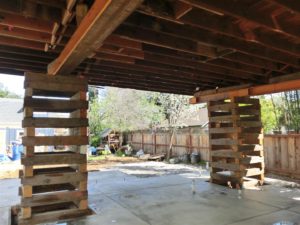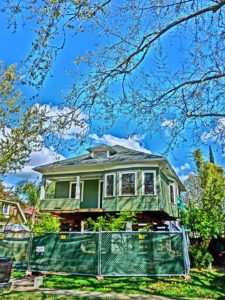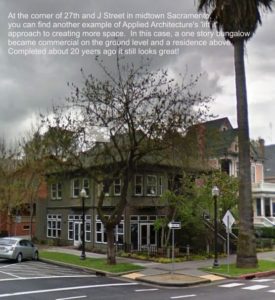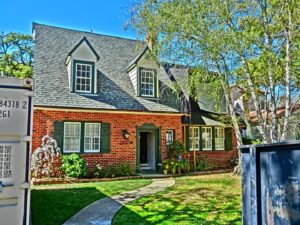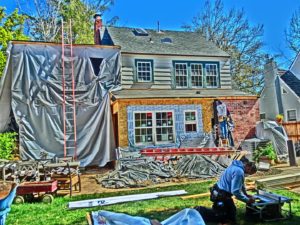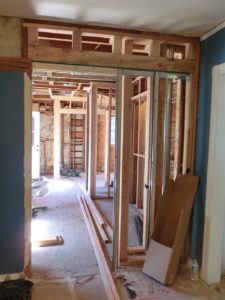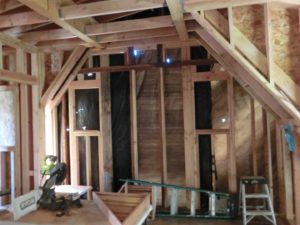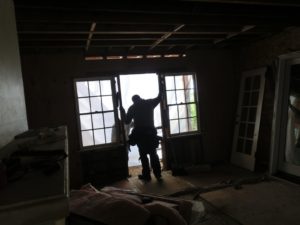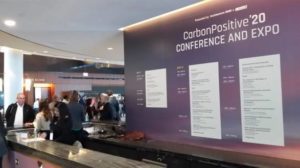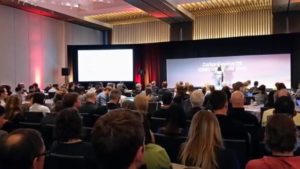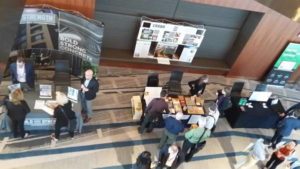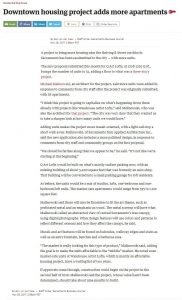It’s hard to believe 12 years have passed since completion of the Globe Mills. Conversion of this blighted, abandoned industrial complex on the edge of downtown Sacramento to a thriving loft and senior housing project is still amazing today … but how much has changed. Rest in peace Ali Youssefi.
Category: Present
Experiments in Action
Makenzie Clark
Meet Makenzie Clark . keeping things in perspective!
Introduced to our world by Kim and Ryan Saturday, 8pm . she’s a natural at leveraging her 6 lb 8 oz into lots of joy!
Cheers
Mike
Movin on Up
Applied Architecture has helped some 1800 families over the last 40 years, shaping their living space to better fit their needs, budget and preferences. Sometimes the best way to get more space is to “move on up”. This classic historic home will look like it was originally built as a two story home when we’re done.
Currently underway in Sacramento’s midtown area.
Moving ‘up’ can be a very cost effective way to double the size of a home for those who prefer an ‘upside down’ layout (with bedrooms on first floor and living space above). This approach can also work for commercial or mixed use properties; another of our examples of this approach is at the corner of 27th and J Street in the heart of midtown’s commercial corridor.
Progress on a second story expansion in Curtis Park
Progress is welcome when you’ve moved out of your home to make it better . and all the sweeter as it starts to take shape with a bit more elbow room, more light and air, and more function, privacy and amenities. This is what we do.
So nice to get those pats on the back from our customers
ADU projects are small … but just as complex as a complete new home. This Elk Grove customer appreciated our help in making his dream ‘small home’ a reality!
Applied Architecture Inc
Congrats! You just got a new review
*****
Mike and his team are very diligent and professional. I hired them to design our ADU. Mike took the time to meet with us and listened to our wants and needs, then incorporated them into the design. He educated us on what could be done and why some things we wanted cannot be done. The use of space is perfectly designed. The communication throughout the wntire process was clear and concise. We are almost finished with the construction phase of our project and could not be happier. We definitely would recommend Mike and his team if you are planning a custom home.
Reviewed by Lawrence Tom on Google
Carbon Positive 2020
Los Angeles March 2,3,4 2020 Michael F. Malinowski FAIA
This image has an empty alt attribute; its file name is 20200302_131854-Large-1024×576.jpg
Notes from the 2020 Carbon Positive Conference
The 2020 Carbon Positive Conference at the Intercontinental in downtown LA was well attended with hundreds of architects, activists, and experts from all over the world sharing insights, information and strategy. As Covid19 shifted handshakes to fist and elbow bumps, the urgency of climate action was palpable and constant. Over the three days, I found the speakers uniformly expert and compelling; the topics spanning the breadth and depth of the crisis ahead that calls us to action.
This image has an empty alt attribute; its file name is 20200302_140800-Large-1024×576.jpg
A sampling from my notes and scribbles:
“As an organization, we’ve pivoted and are addressing Climate Action as both a FOCUS and a FRAMEWORK to guide our efforts. We’re weaving this important issue into everything we do …” Debra Gerod FAIA AIACA President
The climate crisis is daunting, but it is also a call to action . a reminder of the fundamental duty of architects to protect the health, safety, and welfare of the public. There is no greater threat, and therefore no greater opportunity to do what we do best .”
Robert Ivy FAIA AIA EVP/CEO
“Don’t ask what will happen. Be what happens” . quoting historian and activist Rebecca Solnit Jane Frederick, FAIA AIA 2020 President
“The most powerful instrument for change on the planet . is the stroke of a designer’s pen”
Ed Mazria FAIA Founder Architecture 2030
“A 0.2% difference in the loan rate from one bank for a green construction loan was enough incentive to influence the carbon outcome and shift the marketplace”
(referencing the margin supported by the innovative and comprehensive EDGE software developed by IFC and used worldwide
Paeshant Kapoor IFC at the World Bank Group
Forest provide 73% of the mitigation from natural climate solutions.
Mark Wishnie, Nature Conservancy
‘Using timber actually incentivizes forest stewardship. For every tree cut in north America, three trees are planted” Referencing the carbon sequestration benefits of Mass Timber
Jennifer Cover Woodworks
“Growing up, who would have thought we’d be attending a conference about saving the world”
Ned Cramer Architect Magazine
“Natural Gas is the number one driver of climate change.”
methane is 84 times more potent than CO2 for climate degradation, and gas leaks from the distribution system are endemic, averaging one leak per mile in Boston for example
Panama Barthomay, Building Decarbonization Coalition
“.. the way we now typically design large buildings, they become uninhabitable when disconnected from fossil fuels” . “most building that will be here in 2050 are here right now”. “lets do what MASS Design does in Africa right here: love the buildings we have”
Carl Elefante FAIA Quinn Evans
“We need new disruptors . Business as usual is killing us .
It’s both system change and personal change. We must all rebel. Being professional does not mean being indifferent.
2030 is the new 2050 .
COV19 shows what an emergency response looks like .
We are in the midst of a mass extinction of our own making”
Farhana Yamin Track 0
Remove Less reuse buildings must be prioritized over demolition fix broken things, buildings, places to keep embodied carbon investments intact
This image has an empty alt attribute; its file name is 20200302_132629-Large-1024×576.jpg
My takeaway outline of Climate Action for this architect
Remove Less reuse buildings must be prioritized over demolition fix broken things, buildings, places to keep embodied carbon investments intact
Move Less develop further the many robust tools we have to allow virtual meetings, to avoid the carbon costs of flying and transit
Use Less increase efficiency of our building and fabrication process to eliminate waste)
Emit Less learn to make the smart carbon choices; research and apply the growing body of tools and resources that can support daily climate action in practice
CODA
I decided to make my ‘airport to downtown’ connection ‘low carbon’ . and found the biggest challenge was simple wayfinding (thank goodness for cellphone google). Once I figured out which bus would get me to the subway, I was kind of shocked that I was the only passenger on a huge cranky old hauler that got me to the Red Line. From there it was easy.
Conclusion: no extra time, and savings in carbon and cash . and another move toward a personal ‘new normal’ of everyday climate action.
MF Malinowski FAIA March 6 2020
This image has an empty alt attribute; its file name is CIMG5346-Large-1024×768.jpg
Carbon Positive 2020
Bright Side to a Solar Slugfest
When the new energy code went into effect on January 1st, one of the provisions that gained a lot of press was the new mandate for solar on every new California home. In the footnotes were a couple of exceptions. One was ‘infeasibility’ with a strict documentation script to insure it would be rarely used. The other was “approved community solar” – which in theory could provide the flexibility and cost efficiency of managed solar ownership, while still providing homeowners with benefits of solar savings and contribution toward climate action.
The problem with community solar: although one such plan was submitted last year, it was not approved. While the Sacramento Municipal Utility District (SMUD) ‘Solar Shares’ proposal drew wide support from both CEC staff as well as many organizations and stakeholders (including AIACA), there was also wide opposition from the solar industry and others.
Fast forward to the Energy Commission hearing on February 20th when a revised SMUD Solar Shares was back on the agenda. There was so much interest in this item that a special ‘fixed start time’ was set on the agenda. The normally relatively staid CEC hearing room filled to overflowing, and detailed and very passionate arguments went back and forth – most limited to one minute – extending for over three hours in total. It’s all on youtube if you’re interested to see the at times dramatic testimony https://www.youtube.com/watch?v=fF-ljl0BBd8 where government and industry captains, business and nonprofit leaders, legislators and staffers; scientists and professionals; workers, students, and homemakers; one by one offered so many nuanced perspectives, analyses, and viewpoints. The debate swung back and forth for hours.
When the hearing was finally over, the Commission discussed at length, and finally voted unanimously for approval. AIA California can check this off as an advocacy ‘win’ as we were at the table with a message of concern for the urgent need for powerful climate action; and the need for flexibility to make sure everyone can contribute. We cited our own investment: AIACA has already signed up for Solar Shares for our new headquarters, since our leased building does not give us the option of rooftop solar and we wanted voluntarily to contribute renewable energy.
Now that the dust has settled, looking back what was most striking was not the 100% of the commission behind approval.
What was most striking was that in spite of the fierce debate around nuances of the Solar Shares program, 100% of the opinions on both sides of the argument supported urgent solar action.
That’s a consensus that bodes well for climate action!
Michael F. Malinowski FAIA
QArts Coming to R Street
The QArts will be a major addition to the work of Applied Architecture, leveraging the firm’s nearby Warehouse Artist Lofts, R Street Public Market, Amaro, Bottle and Barlow and more. Applied Architecture has been one of the most active firms in laying the foundation for R Street’s lively mix of edgy loft housing, art and design, restaurant, entertainment and retail.
